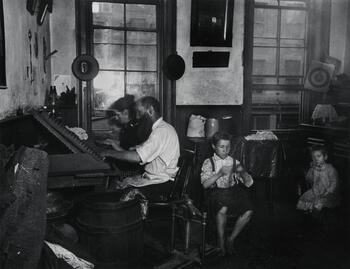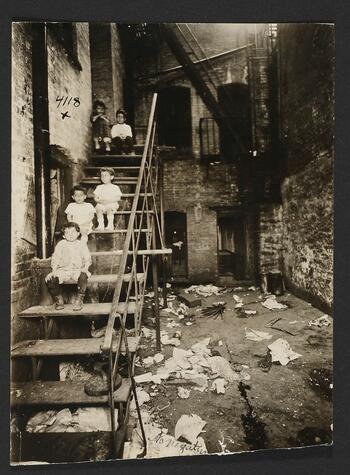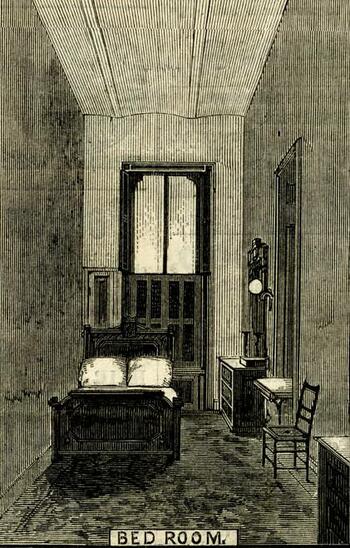All immigrant groups carried their own unique traditions to the United States. Their tendency to settle in ethnic enclaves or remote rural areas with neighbors from the same town of origin encouraged continuation of their native languages and traditional lifestyles. Others who came and laid down roots in mixed neighborhoods felt heightened pressure to assimilate into American culture. Children of immigrants tended to assume American ways more readily than their parents. Public schools and the workplace facilitated Americanization.
New arrivals often faced poor conditions and few options. Overcrowded tenement apartments provided substandard housing for immigrant families. Danish immigrant Jacob Riis, a former police reporter, chronicled the living conditions in the slums of New York City in his 1890 exposé, How the Other Half Lives. Riis’s account drew the attention of middle-class reformers concerned with the plight of immigrants in urban America. These same reformers founded settlement houses to assist immigrant families as they tried to balance their old world ways with the demands of their new American lives.
In 1893 Lillian Wald, a nurse founded the Henry Street Settlement in New York City. In addition to providing basic services to immigrant families, Wald established a safe milk program to provide clean milk for the city’s youngest residents. English and citizenship classes were among the most popular offerings at the settlement houses. At the Practical Housekeeping Center (later Lewis Street Center) in Rochester’s heavily Italian Sixteenth Ward, resident worker Florence Cross recorded the popular use of a single bathtub. In 1910 over 200 baths were given monthly to those who did not have bathing facilities in their homes.
Settlement workers functioned as social workers. Most of the women and men who worked at the settlements were college-educated and native born, and their values sometimes differed from and even conflicted with those of the urban immigrants they worked with. Southern and Eastern Europeans prioritized communal ties and sociability while settlement workers encouraged individuality and privacy. Reformers often pushed public school education for the children of immigrants as part of their efforts to “Americanize” the immigrants. Immigrant parents sometimes resented the reformers’ influence, especially if families relied on the income of working children. Settlement workers also called into question immigrants’ traditional gender roles. Most immigrants expected their daughters to marry and become mothers, whereas settlement workers stressed the value of education and financial independence.
Bohemian Cigarmakers at Work in their Tenement, 1889, courtesy of the Museum of Modern Art
One of Jacob Riis’s photographs, showing a Bohemian family in their home, manufacturing cigars to sell.
Children on Tenement Stairs, circa 1905, courtesy of Columbia University Library
Photograph of children in a New York City tenement building around 1905.
Bed Room, Stewart's Hotel for Working Women, circa 1878, courtesy of the CUNY Graduate Center Collection, 34th Street
Stewart's Hotel for Working Women was commissioned by the wealthy merchant, A.T. Stewart. The hotel opened in 1877 to provide safe housing for the influx of working women into the city. One year later it was reopened as a regular hotel and renamed the Park Avenue Hotel.


